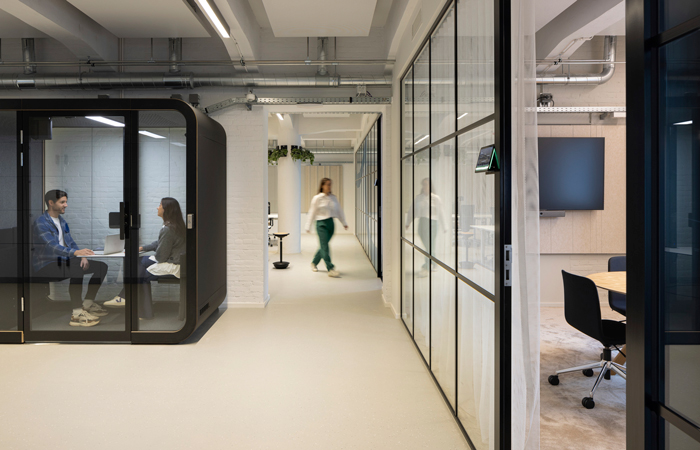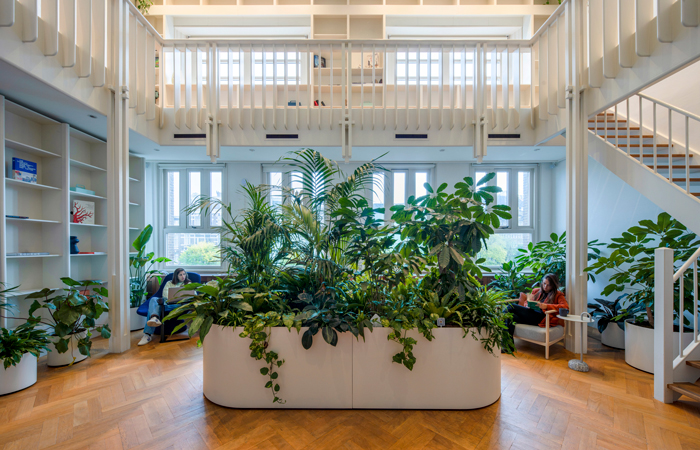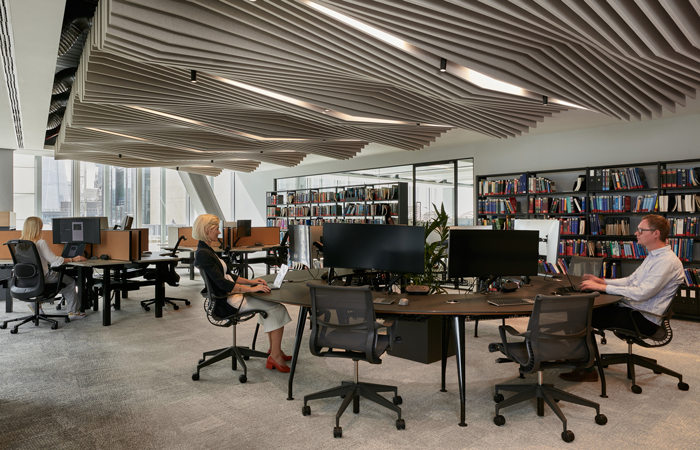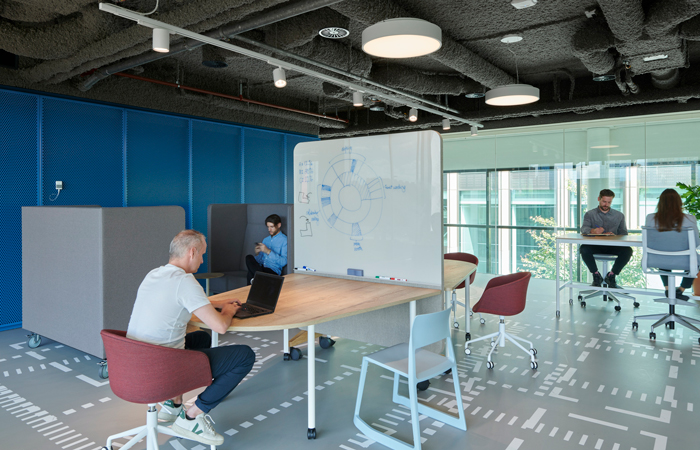Frances Gain, Senior Strategist at M Moser: The role of sensory detail in creating inclusive workplaces
Design Insider is pleased to publish an insightful article by Frances Gain, Senior Strategist at M Moser, exploring the multifaceted concept of ‘inclusivity’ in today’s workplace. Gain delves into how innovative physical design and a culture of belonging are fundamental in supporting diversity, enabling staff to access various choices that enhance their productivity.
‘Inclusivity’ in today’s workplace goes beyond encouraging and celebrating diversity. It involves innovative physical design and the development of a culture of belonging. When a workplace is operationally and emotionally equipped to support diversity, staff have access to choices that allow them to thrive and be their most productive selves.
Conversations around neurodiversity have increased our awareness of the challenges that people with sensory processing disorders face, and how these issues can be creatively addressed at work. Rather than catering to a single group, the intention is to design flexible solutions that benefit all.
A good design plan accommodates diverse needs and ensures that the five senses play well together, without the stimuli becoming overwhelming. From the moment the individual enters the workplace, the experience should be appealing to the senses, although it is also important to bear in mind that there may be cultural variations in what people are drawn to.
Sensory seekers and sensory avoiders may choose different conditions: one person may enjoy the buzz of a brightly lit, active environment, and another may prefer a quiet cubicle with focused lighting. Each of them may need both options within a day, however, depending on the task at hand. A good design plan accommodates these needs and ensures that the five senses play well together, without the stimuli becoming overwhelming.

Personio, Amsterdam design by M Moser Associates
In principle, it should be light, welcoming and attractive, with good sight lines that make the space easy to navigate, but also with private, peripheral areas for those who need to distance themselves. Colours, textures and furnishings set the tone – lush, darker materials work well in quiet areas and clean, hard surfaces for drop-and-go purposes.

HW, London by M Moser Associates
Sound and smell are both powerful senses that evoke memories and associations. Noise tolerance levels vary, so there should be sound control options. Scents may be a sophisticated fragrance or the earthy comfort smell of a cafe or coffee shop. Small touches make visitors feel welcome. Mints at reception, jugs of fresh water, and a choice of dairy and non-dairy milk in hot drinks suggest care and attention to detail.
The work-from-home trend during the pandemic allowed us all to personalise our spaces, intuitively choosing the conditions that would enable us to do our best work. With the return to the office there is growing interest in how these requirements can be met and how the concept of real inclusivity can become an achievable goal. When making design decisions we should have ‘everyone’ people at the table – getting input from people helps us answer their needs more creatively. This is where a culture of belonging is so important – if people feel comfortable and accepted, they will participate more freely.

Miro, Amsterdam by M Moser Associates
With minimal effort and expense, small adjustments can be made to office design that will have an immense impact on both the clients who visit briefly and the staff who spend their work day there. The client experience can be dialled up: brighter lighting, enticing scents, attractive visual elements. For the staff, while a vibrant coffee shop area uplifts and energises, this may need to be balanced by the provision of a small refuge room, with a low sofa and gentle lighting, which offers a safe place to retreat to and refocus.

HFW, London by M Moser Associates
Portable screens or curtains and blinds can block out distracting visual stimuli. Movable partitions can quickly be shifted to create quiet, private workstations or opened up into large, inclusive areas for high exposure, animated workshops. Exercise balls or a ballet bar for stretching are simple and effective tools to encourage movement during the day and to work off some stress.

Global Consultancy Company, Amsterdam by M Moser Associates
Inclusivity does not mean making a dedicated space in the corner for an individual with special needs. It is about creating flexible micro-environments that people can migrate to, as they need them. The goal is to empower people by giving them the ingredients to customise their workspaces. In that way, diversity and inclusivity are encouraged.
- When a workplace is operationally and emotionally equipped to support diversity, staff have access to choices that allow them to thrive and do their best work.
- Increased awareness around neurodiversity has inspired creative design that is to the benefit of all, and has encouraged clients, teams and designers to further explore the realm of sensory design.
- Layer the 5 senses to complement each other – imagine 5 layers of trace paper over your floor plan, take a highlighter and on each trace paper sheet you should be able to zone the senses, one for smell, one for sound, etc. How do they all come together? Are there areas of overwhelm? Is there enough high stimulation and low stimulation zones when all layers are overlapped.
- Sensory elements set tone, but there may be cultural variations in what people are drawn to.
- Smell evokes memories and associations. Should there be a sophisticated fragrance, or coffee shop earthiness?
- Consider touch and texture to help intuitively indicate the behaviour of each space. Such as soft, lush, darker materials for quiet areas and clean, hard surfaces for drop-and-go purposes. The texture (touch) and colour (sight) can suggest etiquette and use without instructing people how to behaviour.
- During the pandemic, working from home allowed us to customise our workspace, creating conditions in which we are most productive and comfortable – we have recalibrated ourselves to our own environmental comfort. Don’t let the workplace become a barrier to sensory comfort and productivity.
- Small adjustments in the workspace have a profound impact on client and staff experience: the provision of a refuge room, movable screens, lighting options, exercise balls, ballet bar. Small gestures and adaptations go a long way. Any adaptations to reduce stress and sensory overload will support your people and help them to feel like they are welcomed and that they belong.
- The aim is to make flexible micro-environments that people can migrate to as they need them, rather than accommodating someone with special needs in a corner.
- To increase diversity & inclusion – enable employees to customise their sensory experience or chose degrees of sensory stimulation throughout the landscape of the office.





